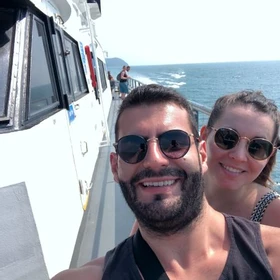About the ride from Plitvice Lakes to Zagreb
It's hard to top the sights and sounds of Plitvice Lakes, Croatia's most famous national park and a UNESCO World Heritage site. With dozens of lakes, waterfalls, and sprawling greenery, Plitvice Lakes is quite literally a breath of fresh air. However, it's time to flip the script and enjoy the bustle of the capital city — Zagreb.
You can trace Zagreb's history back to Roman times, making it a popular spot for history buffs. But this stunning old city offers more than ancient tales. It also has stunning squares, cobble-stoned streets, relaxed cafes, and vibrant bars. The perfect city break accompaniment to follow a few days in nature.
You must travel 138 km (85 miles) northwest through Croatia to get from Plitvice Lakes to Zagreb. This journey typically takes two to two and a half hours, and the main transport option is the bus.
When you leave Plitvice Lakes, you'll depart from Plitvice Jezera Bus Stop, Plitvice Lakes Entrance 1, or Plitvice Lakes Entrance 2. The latter two look like log cabins.
On arrival in Zagreb, you'll be dropped at Zagreb Central Bus Station or Zagreb Bus Terminal.
With this trip, you'll see two very different sides of Croatia.
Five things to see in Zagreb
Don't waste any time researching when you're on the road. These are the top five things to discover in Zagreb:
Church of St. Mark — An iconic emblem of the city, the Church of St. Mark is known for its colorful tiled roof with the coat of arms of Zagreb and the Triune Kingdom of Croatia. It's also one of the oldest buildings in the city, dating back to the 13th century.
Cathedral of Zagreb — This Roman Catholic cathedral has an awe-inspiring Gothic facade, and its pointed spires can be seen in most areas of the city. Like St. Mark's, this cathedral was built in the 13th century.
Is Zagreb worth visiting?
Yes. Many travelers cast off Croatia's capital in favor of the country's seaside destinations.
However, this inland spot is one of the best cities in the country. With exquisite museums, a gorgeous Austro-Hungarian old town, gothic churches, green parks, and lots of pedestrian areas, it's easy to get lost in Zagreb's European charms.
How to get from Plitvice Lakes to Zagreb
The primary way to get from Plitvice Lakes to Zagreb is by bus. Here's what you need to know before you book.
By bus
Buses from Plitvice Lakes to Zagreb take 2 to 2.5 hours, depending on the provider you book.
Some buses depart once a day, and others three times a day. Book in advance to secure a spot on your chosen travel date.
Unlike other routes, there's only one class of bus — a Standard Bus. Amenities included depend on the provider. However, they usually include A/C, WCs, chargers, individual seats, and WiFi (subject to availability).
Some buses have wheelchair accessibility. Look for this badge when booking if required.
The cheapest bus tickets cost around $15 per passenger.
Though all buses are Standard Buses, they pick up and drop off passengers in different locations. Make sure you note the correct ones.
About the ride from Plitvice Lakes to Zagreb
The ride from Plitvice Lakes to Zagreb takes you northwest.
Most buses take the highway and don't stop frequently, limiting your views on this journey.
However, you will see Croatia's sprawling countryside and a few small towns along the way. You'll also pass through the southern neighborhoods of Zagreb as you arrive.
This route is safe for all travelers, whether you're a solo adventurer or embarking on your first trip. The buses from the national park to Zagreb are popular among tourists of all ages, genders, and nationalities.
Additionally, most drivers and bus station staff have basic English skills. Don't be afraid to ask for assistance if needed.
The best time to travel from Plitvice Lakes to Zagreb
April to September is the best period to travel from Plitvice Lakes to Zagreb. Throughout this period, the average temperature is 25°C/77°F. April is the coolest month, with an average temperature of 18°C/64°F, and July and August are the hottest months, with a steady temperature of 29°C/84°F.
The temperature is cooler from October to March. December and January are the coldest months; you can expect temperatures around 4°C/39°F.
The wettest month is May when an average of 150 mm of rain falls. Bring an umbrella as you may have a day or two of rain. However, rain isn't a significant concern in this region. The driest month is December, with an average of 66 mm.
Where to visit after Zagreb?
After seeing the sights of Zagreb, consider traveling to Split to visit Croatia's iconic Dalmatian coastline. Split offers the chance to island-hop, sample delicious seafood, and explore ancient architecture. Traveling from Zagreb to Split takes eight hours by bus or 45 minutes via flight.














